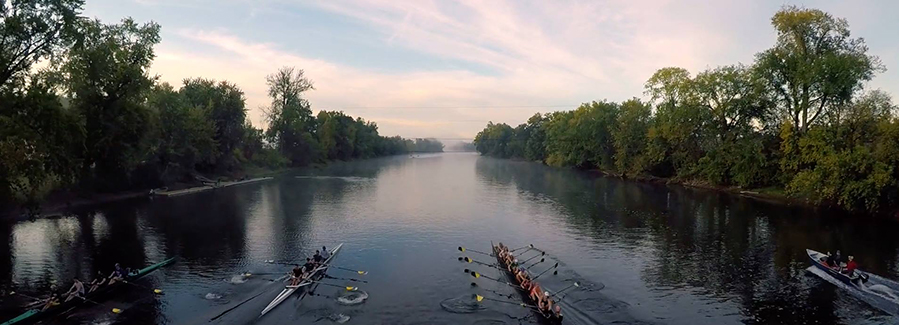Crew club represents Vermont in the national stage
The crew team practices early Oct. 6 morning. The men’s team placed second in the collegiate fours while the women’s team placed third at the Head of the Charles Regatta in Cambridge, Mass. Oct. 20.
December 1, 2017
Last month, the University of Vermont club crew team managed a major success.
At the Head of the Charles Regatta in Cambridge, Massachusetts, the men’s crew team placed second in the collegiate fours event which uses four-person boats, while the women’s team placed third in the same event.
According to men’s team president, junior Anthony Sacco, the event is the “biggest regatta in the world.”
“It’s like the Super Bowl of our sport in the fall,” Sacco said. “We do nationals in May in Georgia, which is awesome, but the Head of the Charles is what everyone knows. It’s a huge international thing; a lot of Olympians come from around the world.”
The men finished 21 seconds behind the winning boat from the University of North Carolina, while the women finished four seconds behind the winners, the University of New Hampshire, and just one second behind second-place Lafayette University.
These results were the best the team has ever had in its history, head coach Kyle Dowd said.
“Historically the program has been a little lower than that; we’ve had little pockets of success here and there where there’s maybe one crew that does really well,” Dowd said.
“These two boats throughout the entirety of the fall were doing well. The men won an earlier race, the women finished second in an earlier race, and that gave us a big shift from the historical norm.”
The success was very emotional for some of the team members.
“A few of us were crying,” Sacco said. “We were ecstatic. It was amazing, and it’s definitely carried over a lot to everyone; everyone wants to share in this success.”
With the fall season now over, the team turns its focus to building fitness for the spring season, which features different styles of races.
“In the winter, we train indoors on rowing machines and we do weight training as well,” Sacco said. “That’s all to build general fitness up into the spring so we’re hopefully faster than the fall, because race distances are shorter in the spring.” “They’re a little bit faster, a little bit more intense.”
During the season, the team is training on the water every day, Dowd said.
“It’s like Monday to Friday then Saturday, we have practice in the mornings from 5:30 to 7:30, and Saturday runs from 8:00 to 10:30,” Dowd said. “And then when the ice melts, we’re back on the water six days a week.”
The team usually participates in about four races in the fall and four or five in the spring, Dowd said.







